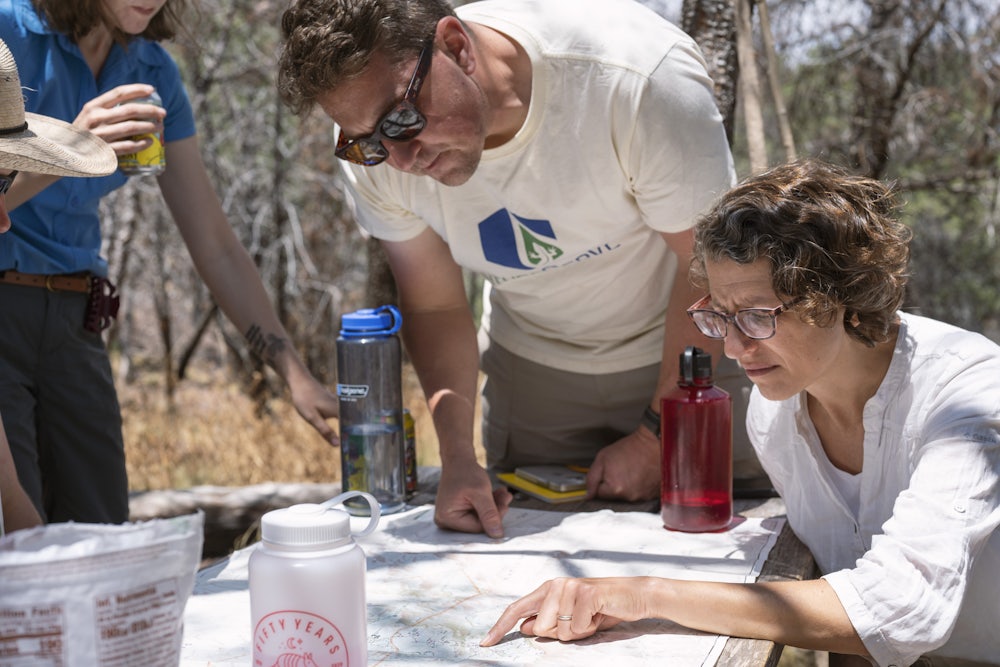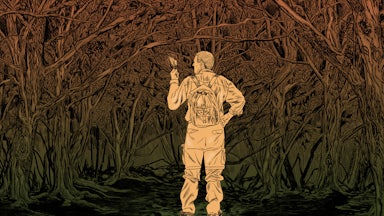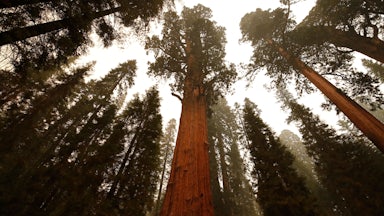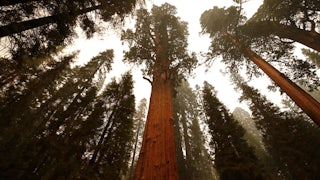On a sunny afternoon six weeks ago, a group of botanists who had spent years scouring Far West Texas for a long-lost oak species finally found their bounty. And this Thursday, they announced it to the world: Quercus tardifolia officially still exists—as one lone tree.
On the third day of their field work in May, the botanists fanned out like a search party across Boot Canyon in Big Bend National Park. Walking in pairs a few meters apart, their eyes scanned the off-trail canopy for the lost oak. They’d examined thousands of trees already on this trip—to no avail. Then, miraculously, something caught Michael Eason’s eye. “As soon as I saw it, it stood out from everything else,” said Eason, a conservation officer for the San Antonio Botanical Gardens and author of the field guide Wildflowers of Texas. “It was sort of astonishing.”
The tree stood 30 feet tall. Its leaves were thick, like cardboard, their undersides fuzzy with a soft down botanists call pubescence. Its trunk bore scars of wildfire and a fungal infection, and the top of its foliage bore a yellowish cast.
But there it was: a solitary Q. tardifolia. In the instant Eason recognized it, it became the only known living specimen of the country’s rarest oak species. Each of the nine botanists was amazed.
“It was clearly so distinct, so different from all the other things we had been seeing,” said Emily Griswold, an oak specialist and director of horticulture at U.C. Davis Arboretum and Public Garden. “It was something special.”
The discovery of what may be Q. tardifolia’s last stand—just a few weeks prior to the ninetieth anniversary of Q. tardifolia’s original discovery—marks a new chapter for the species. In a remarkable botanical mystery that I wrote about last year, it had been presumed extinct since 2011, when the last known living tree of its type died in Big Bend before it could be studied by biologists or cultivated for conservation. Since then, a succession of botanical expeditions repeatedly failed to locate any more remaining survivors.
“It just kind of felt like chasing a ghost,” said Griswold, who had been out to survey the park a half-dozen times, including a few Q. tardifolia–specific trips. “I wasn’t optimistic about finding anything.”
Wes Knapp, chief botanist at the biodiversity nonprofit NatureServe, specializes in extinction-teetering plant species holding out in last, lone locations. May’s sighting represents the rarest flora he’s ever seen, he told me. “There’s one,” he said. “That’s insane.”
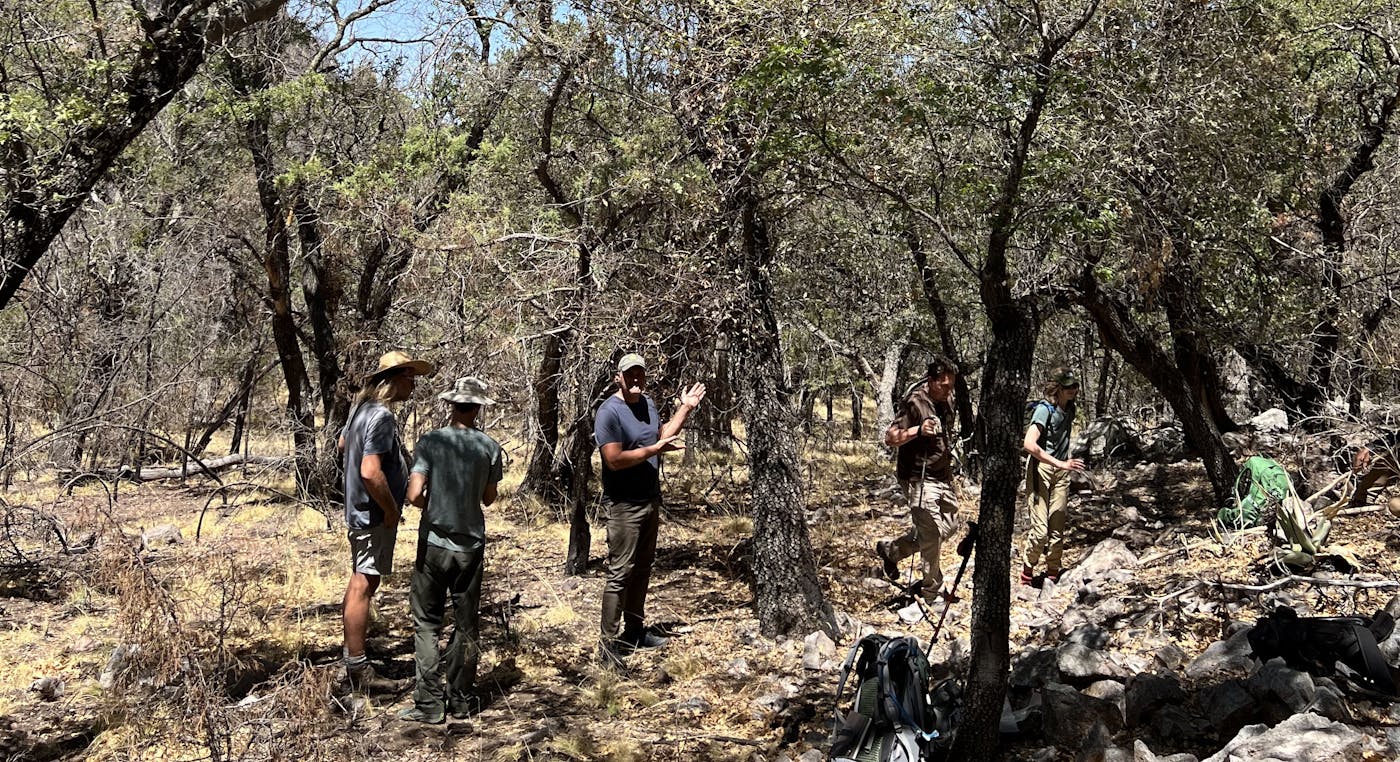
The miraculous discovery of one tree in the 880,000-acre national park has proven that the species is not extinct—yet. Now the lone survivor is in need of immediate help. Its trunk is riddled with fungal cankers and fire scars. Storms, droughts, and wildfires—each more common and more intense thanks to climate change—also threaten its continued existence. Around its perimeter, dead stumps and other tree debris encase the Q. tardifolia in a de facto tinderbox.
“It was not a vision of vigor, that is for sure,” Griswold said. “But it didn’t feel to me like it was at death’s door. I think it could hold on.”
Critically, the remnant stand is not producing any acorns, complicating efforts to grow more of the species. But acorns wouldn’t necessarily have been the perfect conservation vehicle either: Unlike other tree seeds, acorns cannot be traditionally banked because they cannot withstand the dehydration and cold required for long-term preservation.
Instead, the group hopes to propagate or graft small sprouts they found at the base of the tree, and protect those offshoots in living collections at arboretums or botanical gardens. “That is going to be our insurance policy against extinction,” said Murphy Westwood, vice president of science and conservation at the Morton Arboretum, a partner of the project. Down the line, Knapp said, cultivated clones could be potentially transplanted back into the wild.
The surviving tree’s infertility is a reminder of the precariousness of species whose existence is limited to a solitary, imperiled population. Rediscovery was just step one. Bringing it back from the brink is the next. “We’ve been given that second chance, and we just can’t blow it,” Eason said. “It’s not one we’re going to waste.”
Researchers at Morton will also continue an ongoing molecular audit to confirm whether the DNA from the discovered tree matches previous Q. tardifolia samples from herbariums. The genetic work will also aim to settle long-standing debate over whether Q. tardifolia is a distinct species in its own right or a genetic blur between two other hybridizing oaks.
A project of this scale—which cost “budget dust compared to the grand scheme,” Westwood said—is still rare in the resource-strapped field of botany. Even though more than half the species listed under the federal Endangered Species Act are plants, in recent years flora have received less than 5 percent of total funding for endangered species recovery. The field is also losing personnel as a drove of federal and academic botanists retire.
In an era of mass extinction, many of the botanists who remain are documenting as species vanish from earth. It’s often dire, despairing, and hopeless work. “That’s what we expect to see more and more of as we move through the Anthropocene,” Knapp said.
Q. tardifolia can now serve as a glimmering example of how much of the natural world remains to be discovered—not disappeared—and how we might still save a species from that final and futile fate. “All hope isn’t lost,” Knapp said. “We need to be clear about that.”
